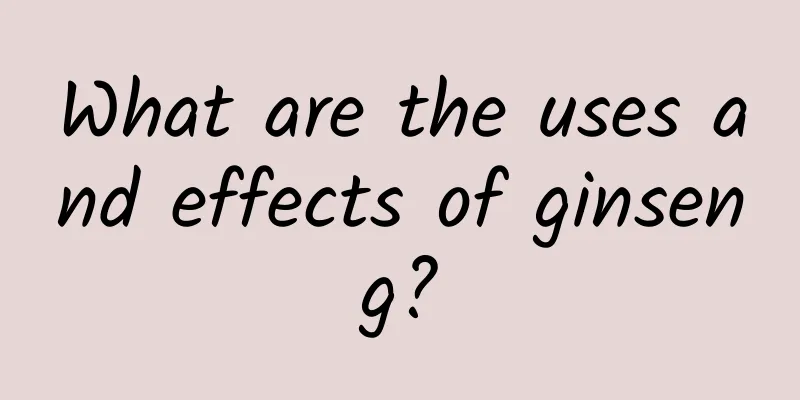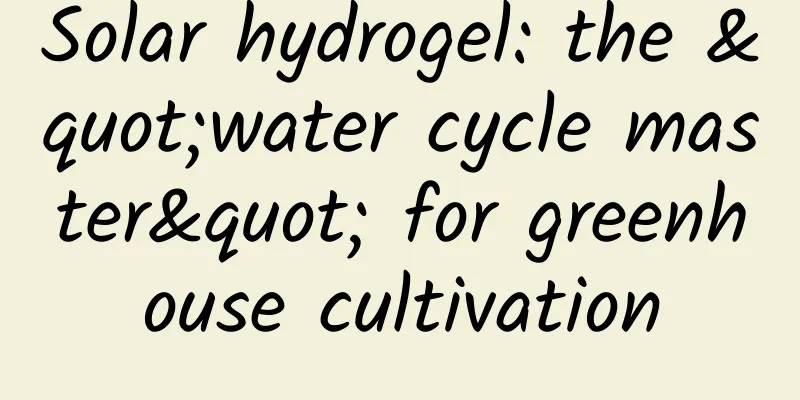What are the uses and effects of ginseng?

|
There are many rare Chinese medicinal materials in our lives, Cordyceps is one of them, and ginseng is also one of them. Even the most precious and highest quality ginseng has an astonishing price, which is no longer measured in tens of thousands. However, people's living standards have improved now, so eating ginseng for health care is obviously a very easy thing. So, what are the uses and effects of ginseng? Ginseng can prevent and treat acute and chronic altitude sickness caused by hypoxia Under hypoxic conditions at an altitude of 7000m, a study on the changes in the ultrastructure of the cerebral cortex of rats under acute hypoxic conditions showed that it has a significant effect in protecting the ultrastructure of cerebral cortical neurons from hypoxic damage; experiments have also observed that ginsenosides do have a significant inhibitory effect on the utilization of endogenous glycogen. At the same time, it can enhance tissue respiration, promote anaerobic glycolysis, increase production capacity under hypoxic conditions, and reduce the body's oxygen consumption, so it can protect neurons and the cardiovascular system and improve tolerance to hypoxia. Clinically proven, ginsenosides are effective in preventing and treating acute and chronic altitude sickness. Ginseng can improve brain oxygen uptake Ginseng also has a significant effect on cerebral blood flow and brain energy metabolism. Ginseng preparations can increase the glucose uptake in rabbit brain, while reducing lactate, pyruvate and the lactate/pyruvate ratio, and can convert the utilization of glucose from anaerobic metabolism to aerobic metabolism. Ginseng can also increase the free inorganic phosphorus in the cerebral cortex by 25%. Ginseng fruit saponins can improve the brain's oxygen uptake capacity. Ginseng total saponins and ginseng root total saponins have protective effects on cerebral ischemia/reperfusion injury. In short, ginseng can enable the animal brain to utilize the energy substance glucose more rationally, oxidize energy, and synthesize more ATP for activities such as learning and memory. Ginseng plateau mixture has the ability to resist plateau hypoxia Through the acute decompression and hypoxia experiment, it was proved that ginseng plateau mixture can significantly reduce the mortality rate of mice and improve their ability to endure acute hypoxia. The mechanism of ginseng plateau mixture in resisting hypoxia needs further study, which may be related to its improving blood circulation of the heart, brain, lungs, etc., improving myocardial metabolism, anti-thrombosis, thrombolysis, improving blood rheology and adaptogenic effects. Ginseng plateau mixture needs to be put into clinical use to test its efficacy in combating high altitude hypoxia. |
<<: What are the effects of Panax notoginseng powder
>>: What are the effects and functions of wolfberry sprouts?
Recommend
You may think you are resting by doing these 5 behaviors, but they are actually very energy-consuming!
After you finish your work and walk out of the of...
The effect of drinking bitter vegetable seeds soaked in water
In recent years, as people have been going to hos...
The efficacy and function of Spathiphyllum
Do you know White Crane Vine? It is a common Chin...
The efficacy and function of rice grass, the most comprehensive introduction to plants
Normally when we go to the hospital, the doctor a...
How was the world's largest volcano formed? Chinese scientists propose a new model for the formation of submarine volcanoes!
Recently, Zhang Jinchang, a researcher at the Sou...
The efficacy and function of bonnet fern
Bone fern is a kind of traditional Chinese medici...
Sedum sedum is released! Is Sedum a succulent plant?
Recently, the internationally renowned journal Pl...
Stop saying it’s okay to be a little fat when you are a kid. Childhood obesity is likely to continue into adulthood!
Review expert: Shen Yingjian, Director of the Nut...
A structure that a child can make has puzzled the mathematical community for 50 years
Not long ago, the famous mathematician Richard Ev...
The ten most powerful mythical beasts in "Classic of Mountains and Seas": Kunpeng, which devours everything, can only be at the bottom, and the auspicious beast Bai Ze cannot be in the top three?
As a famous ancient book of strange stories in my...
Hitwise: Ranking of Indian travel websites for the week ending August 20, 2011
As of the week ending August 20, 2011, in the ran...
The efficacy and function of Chuan Di Long
For many Chinese people, traditional Chinese medi...
Chinese patent medicine for testicle nourishment
Whether the testicles are healthy will directly a...
What medicine is good for softening blood vessels?
Hypertension and high blood lipids are very commo...
[Smart Farmers] Eating and appreciating dates: the date culture unique to the Chinese
Chinese people have an indissoluble bond with juj...









